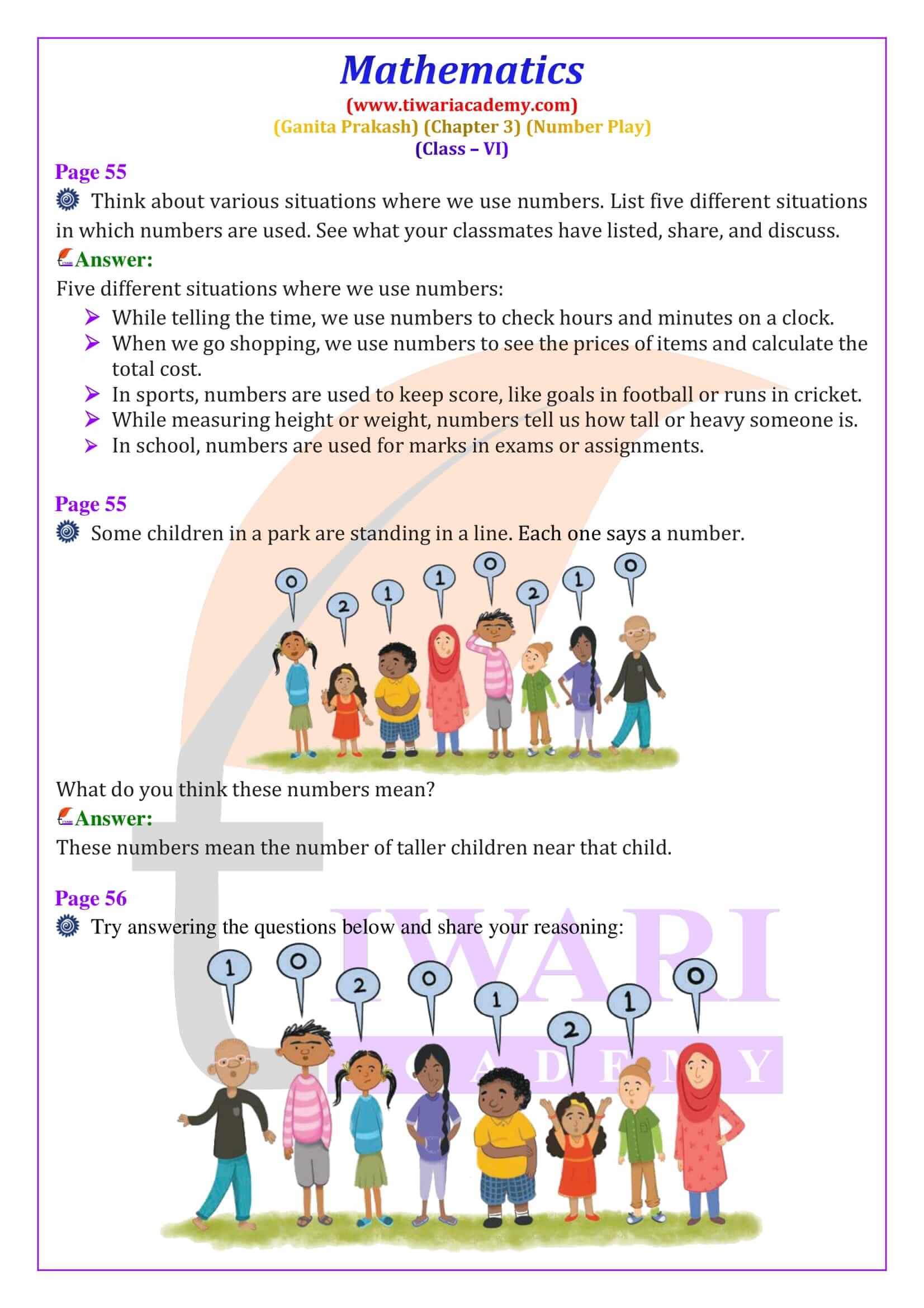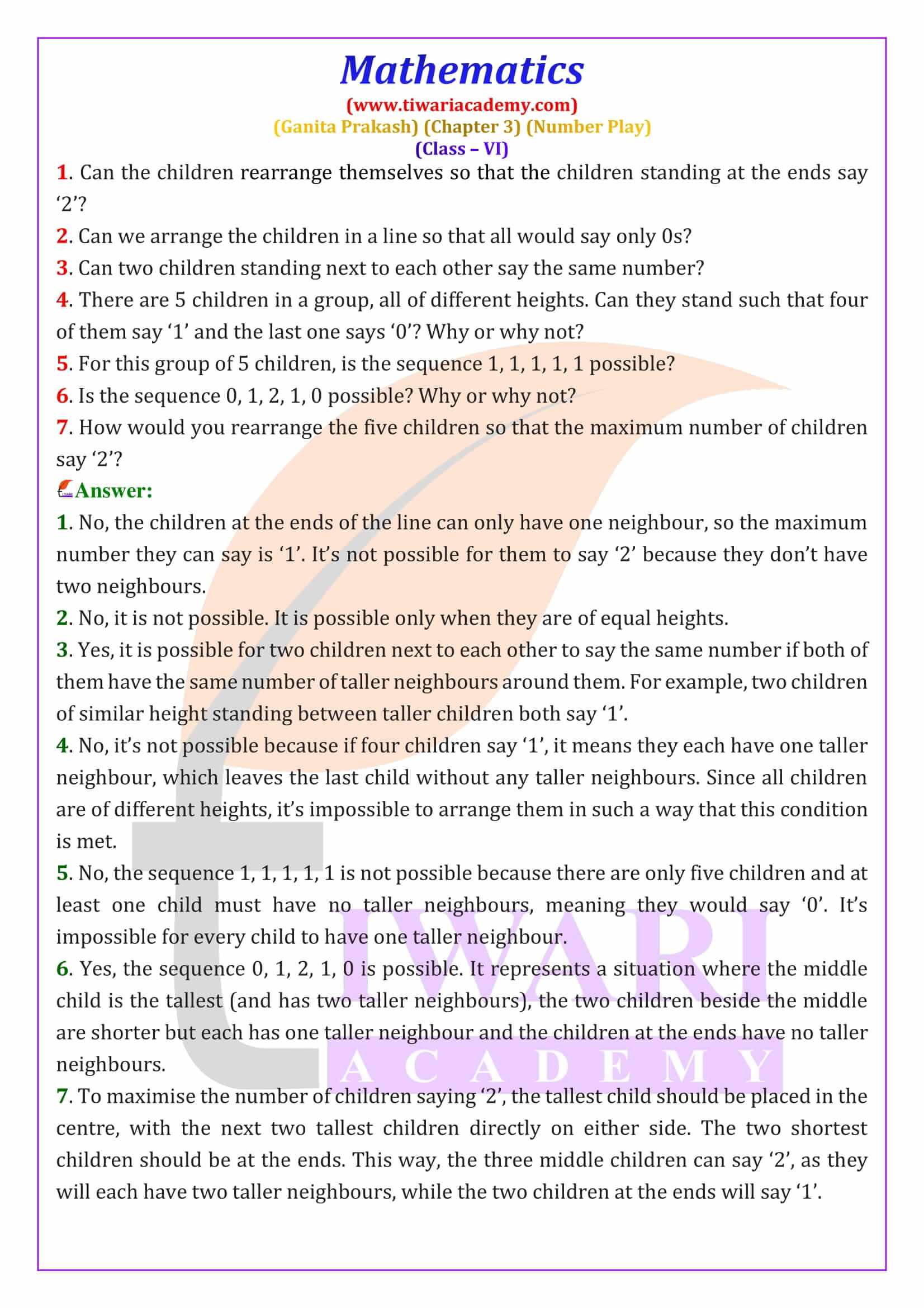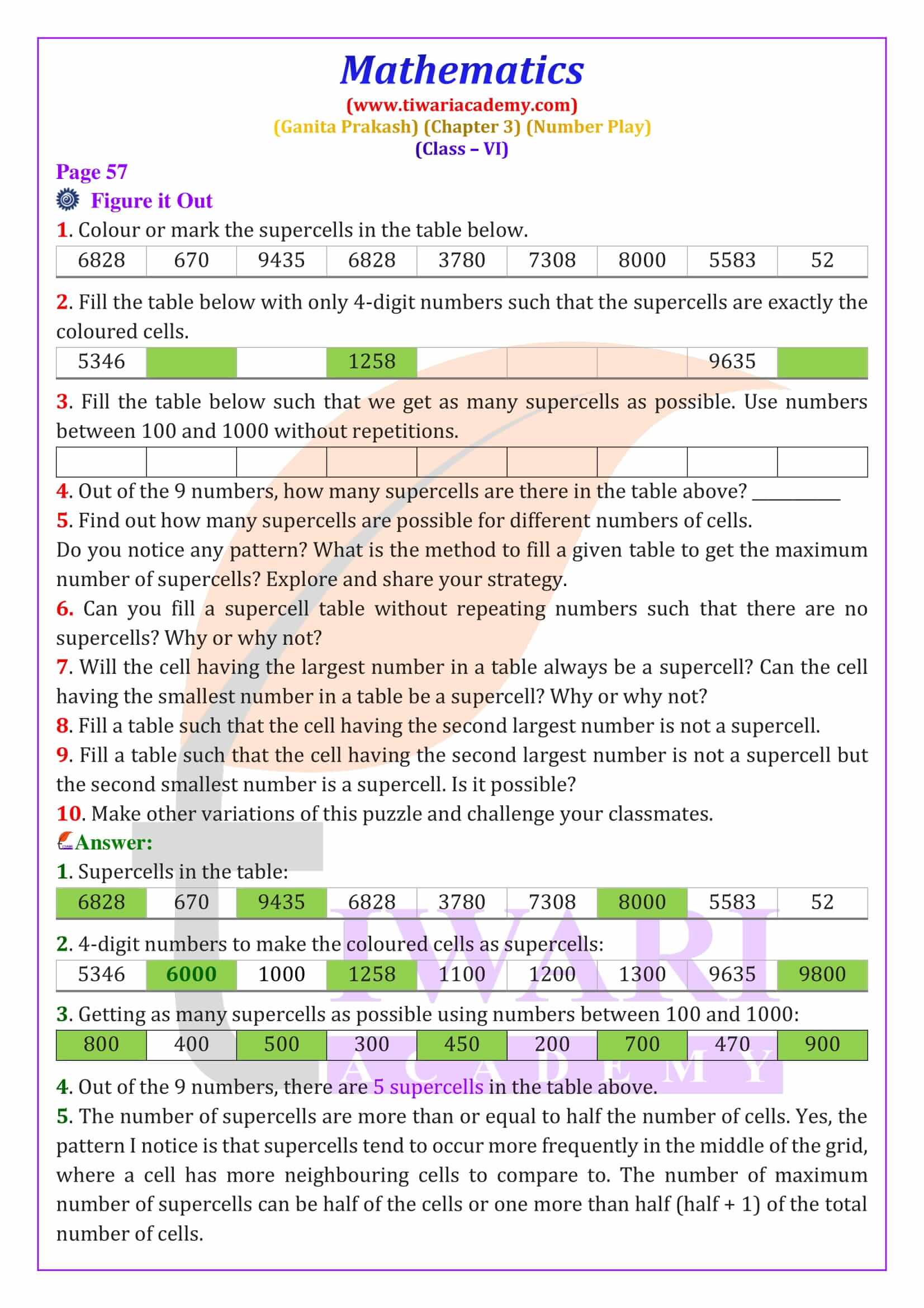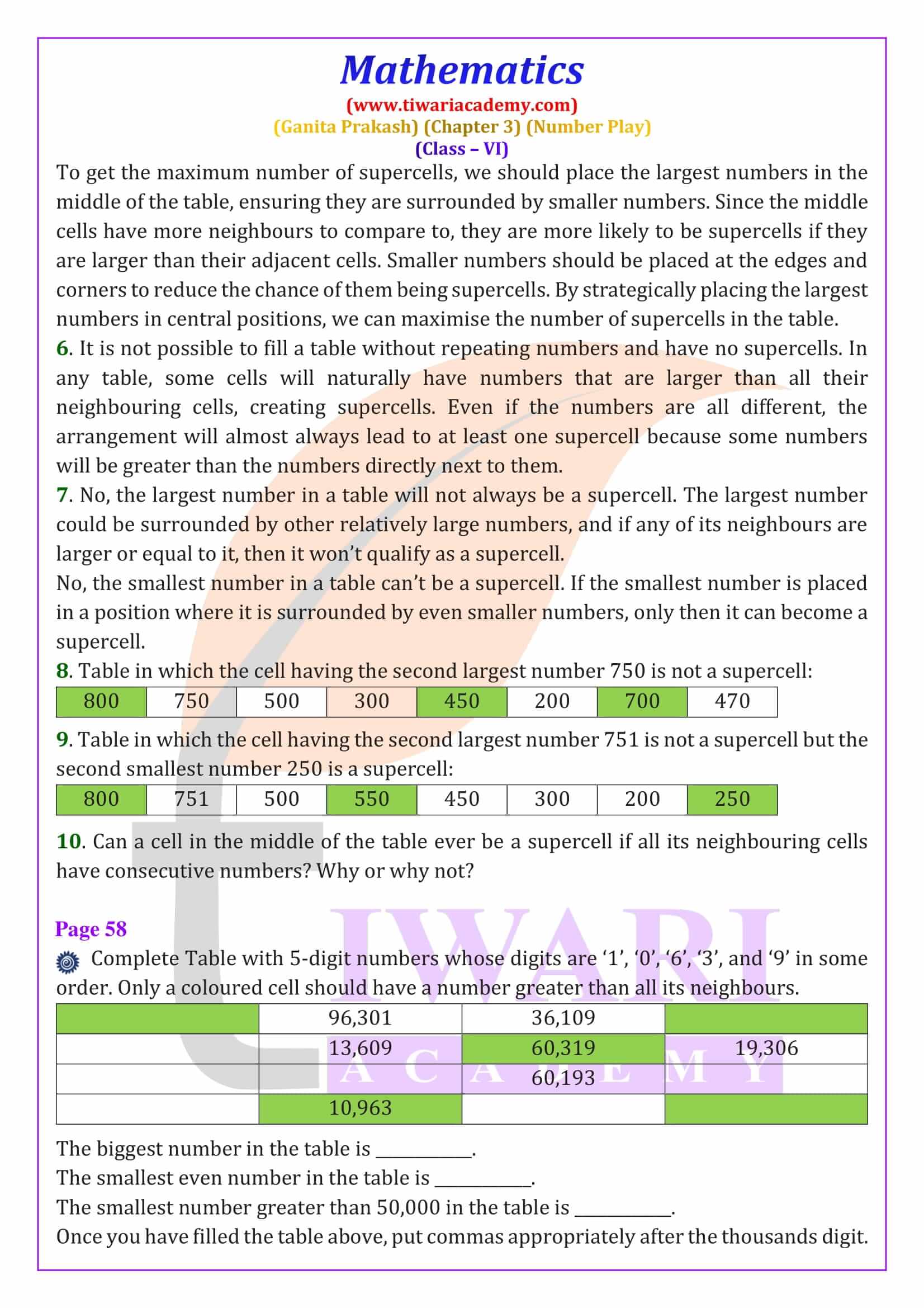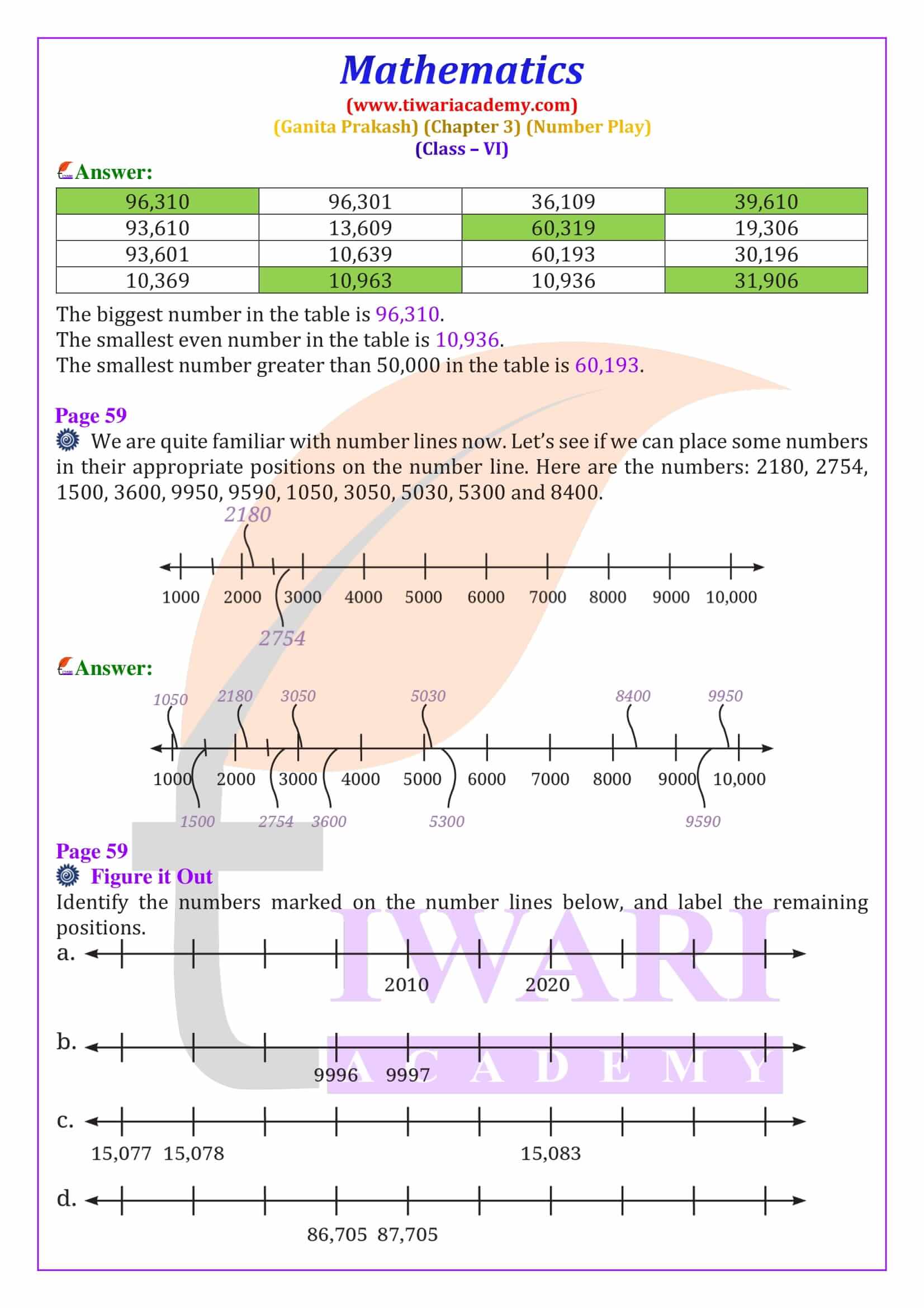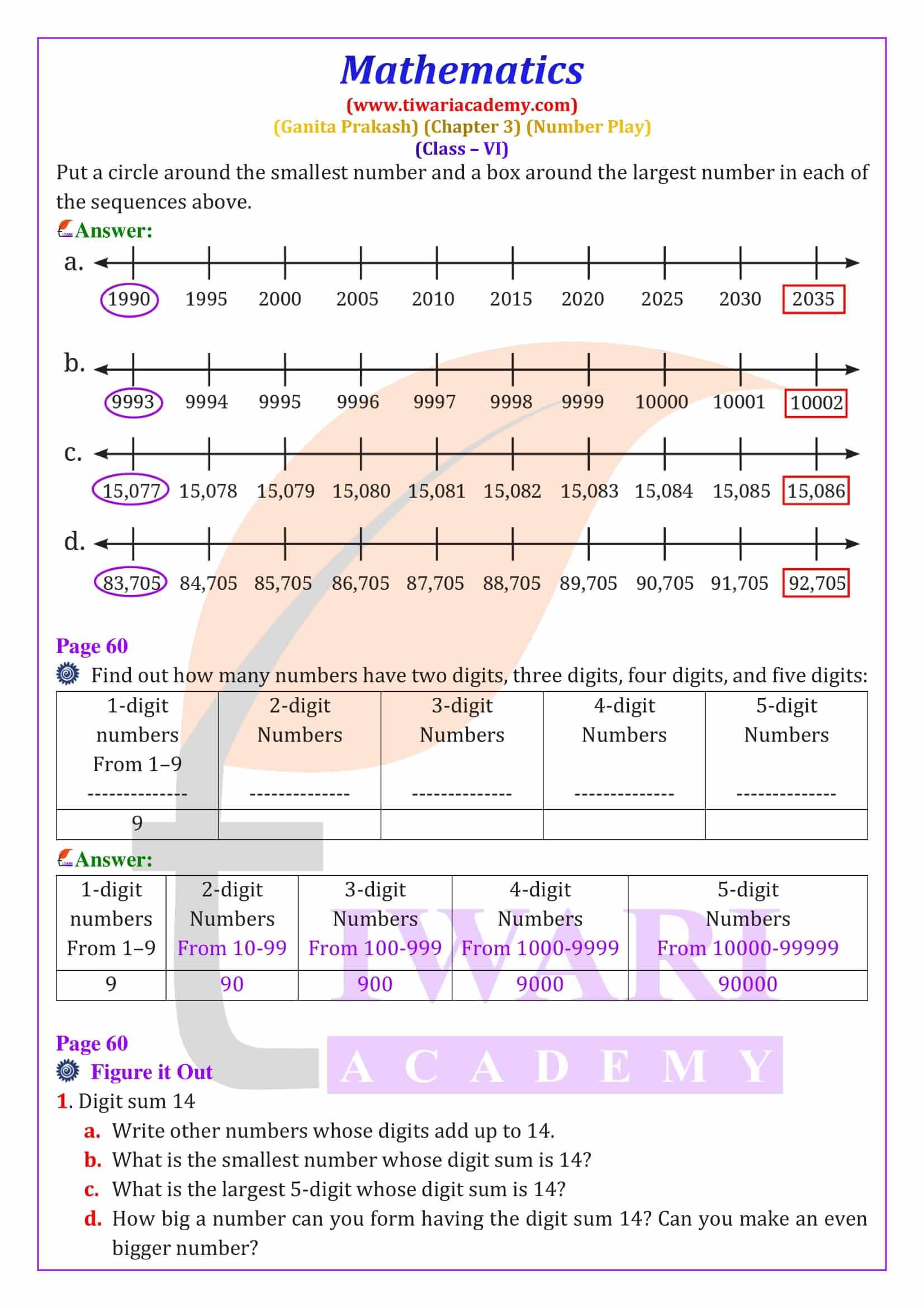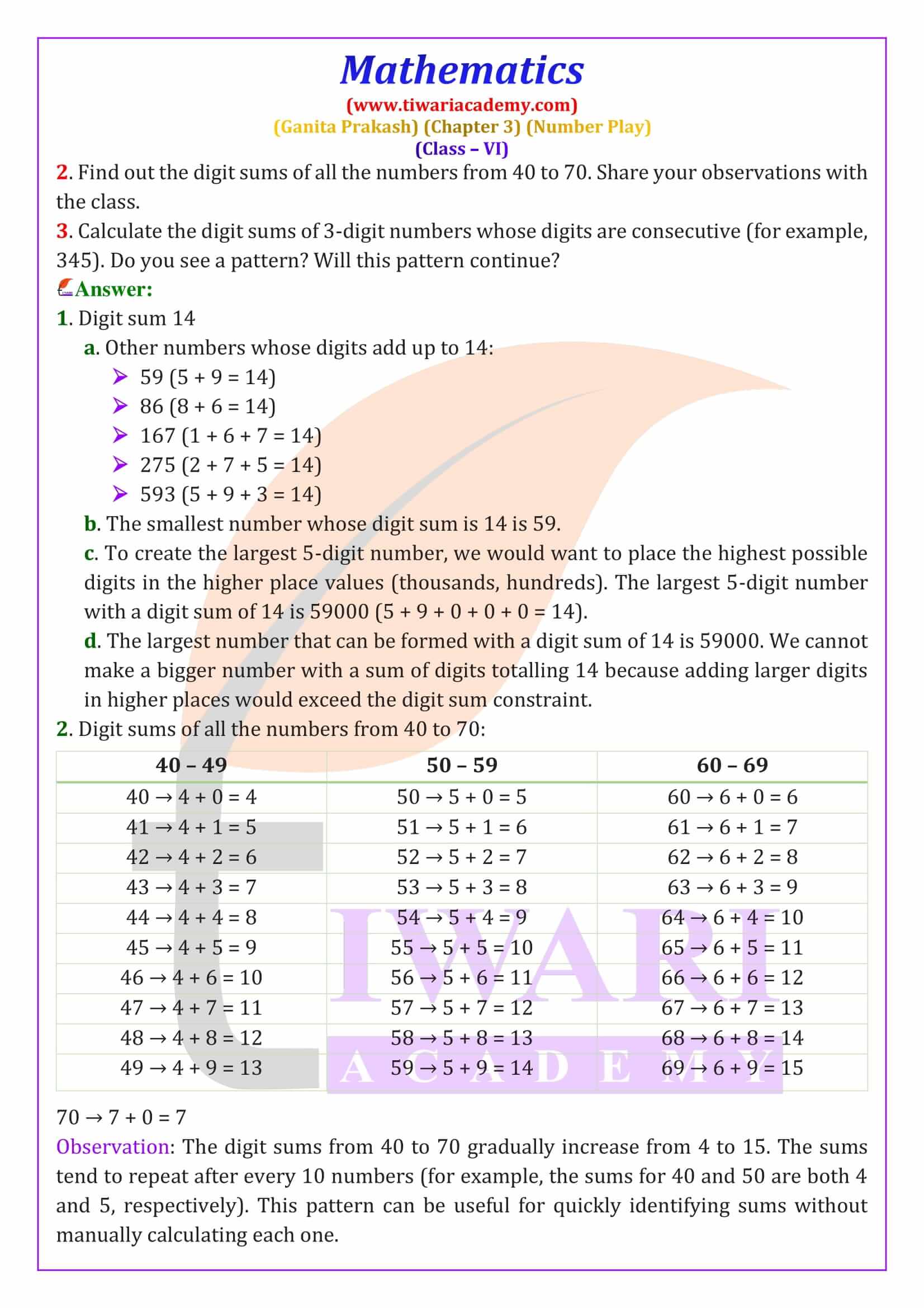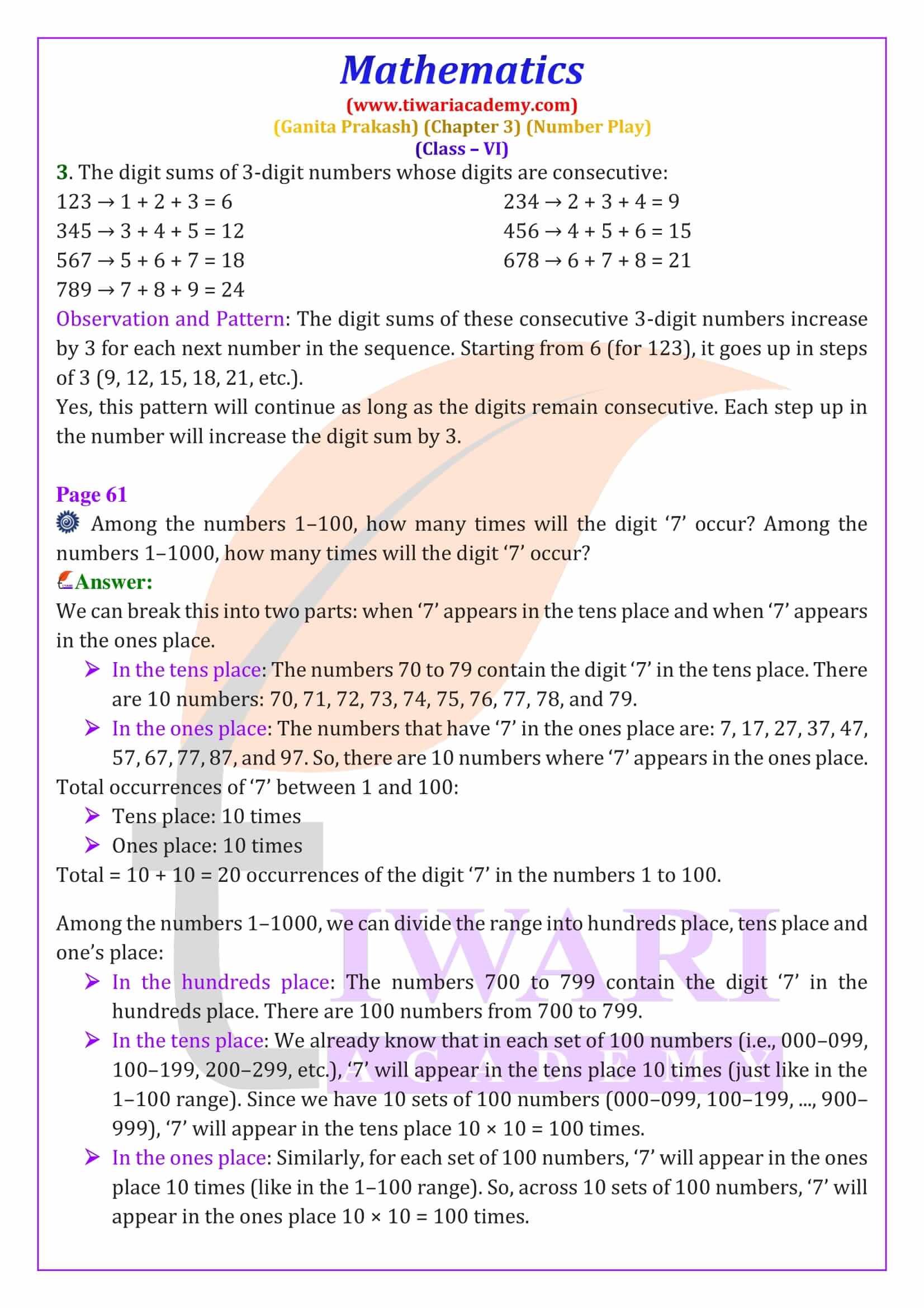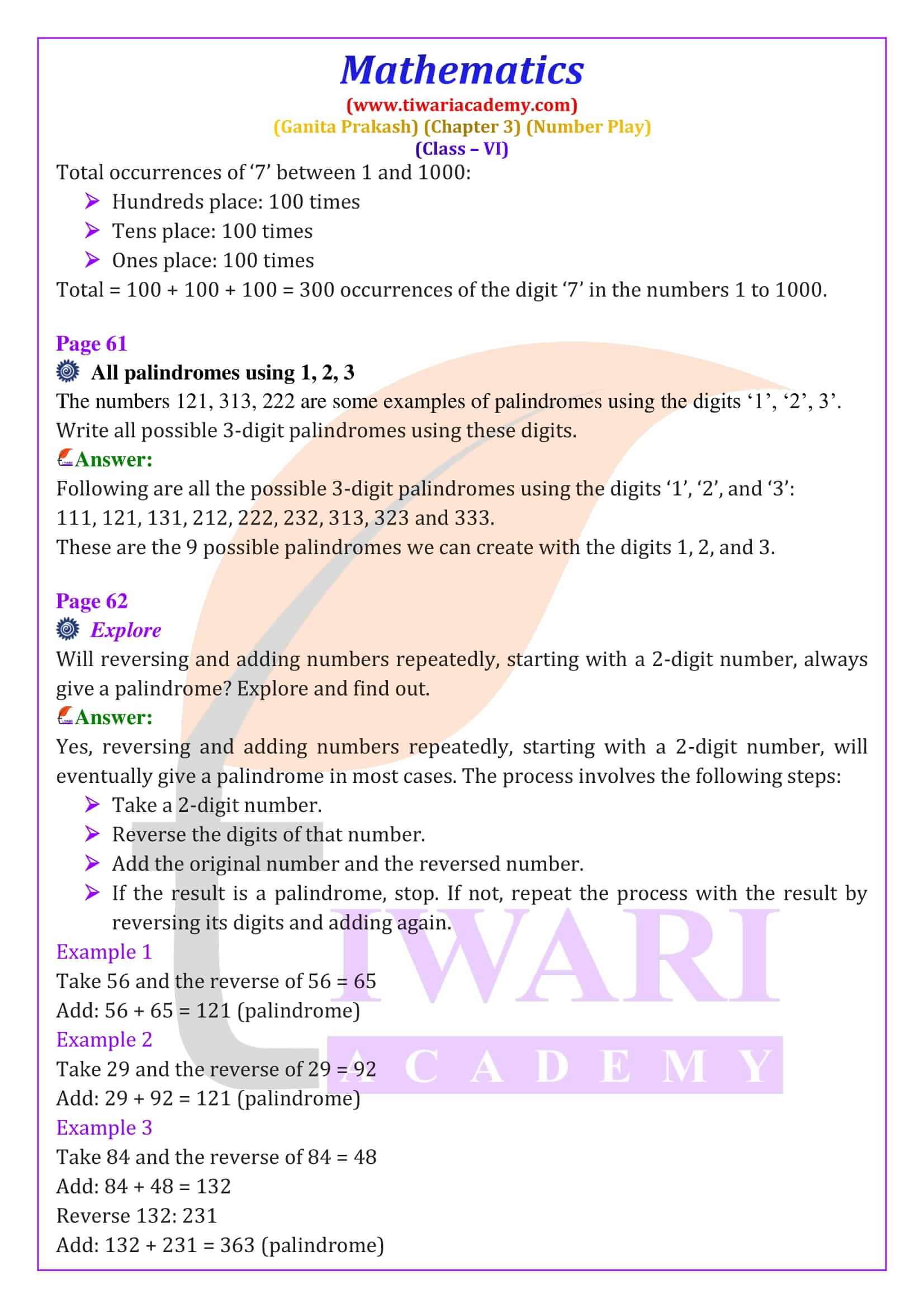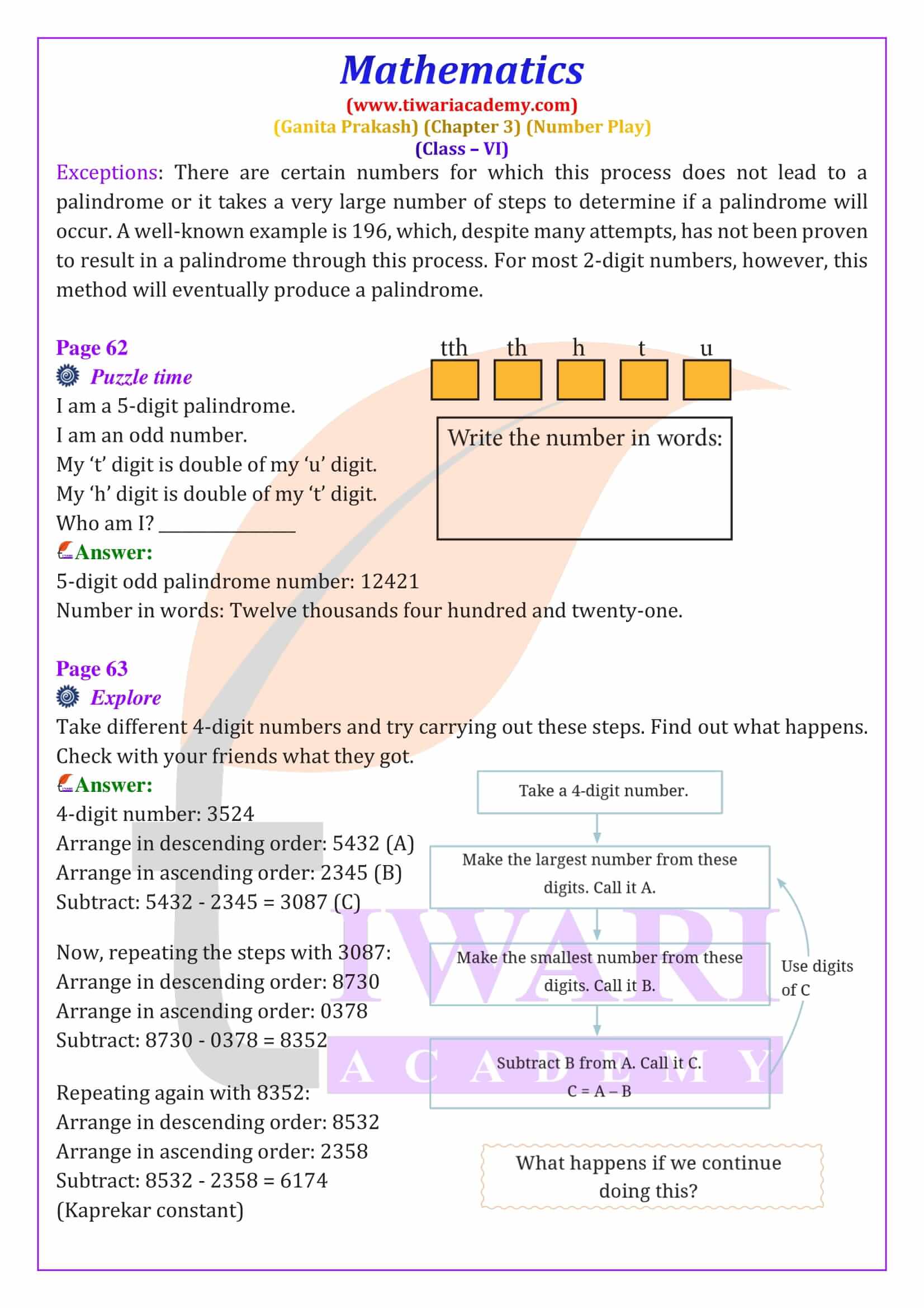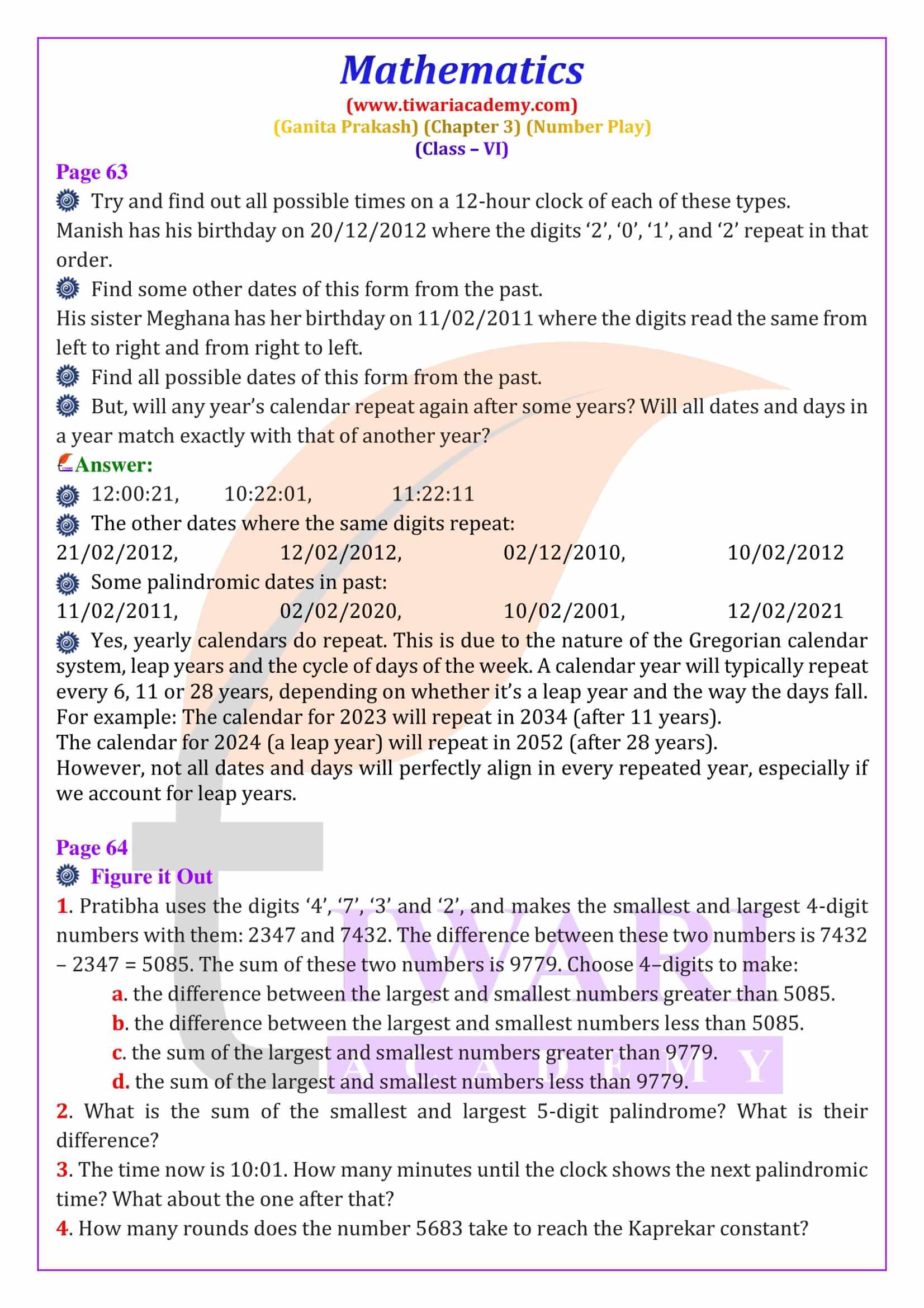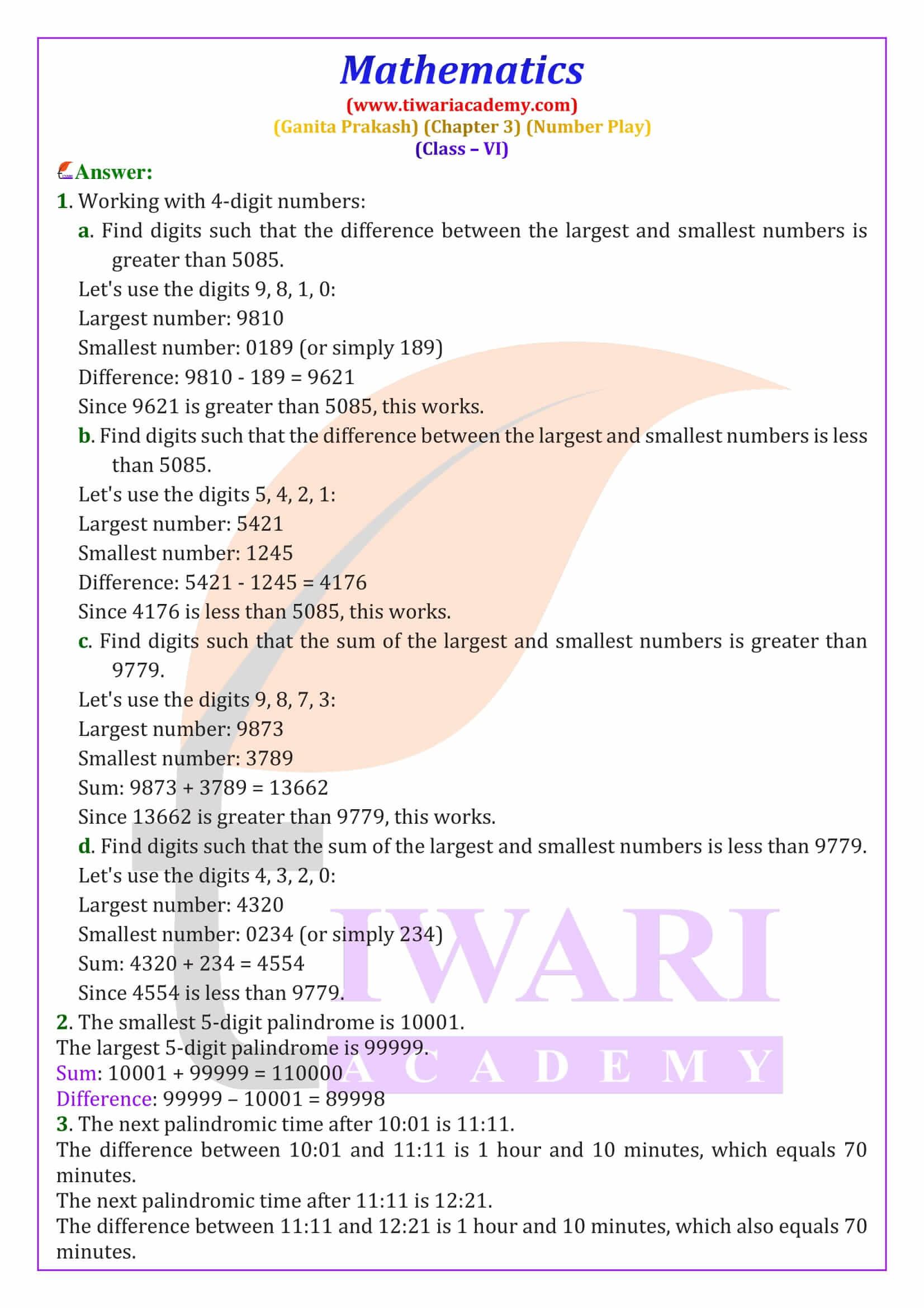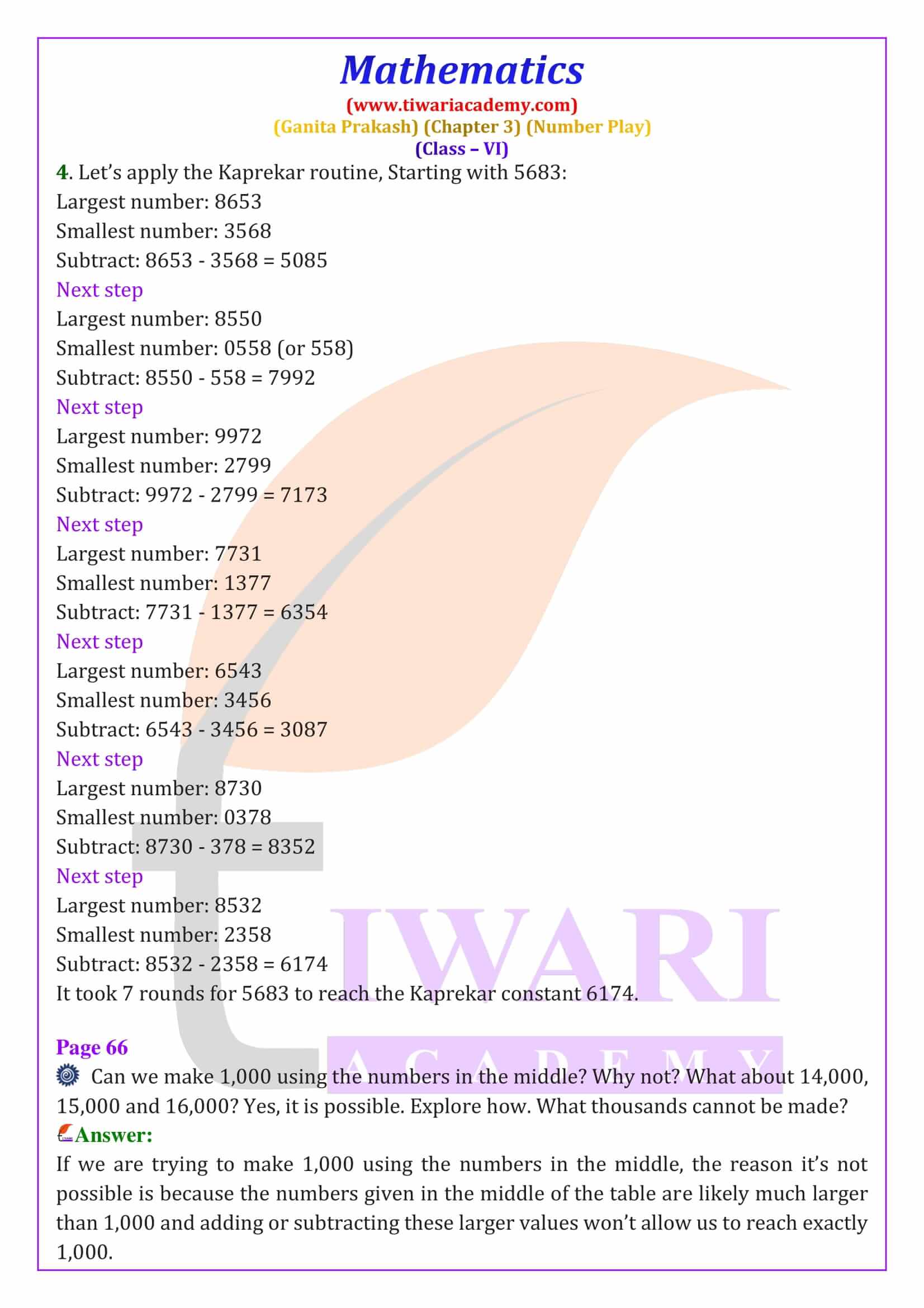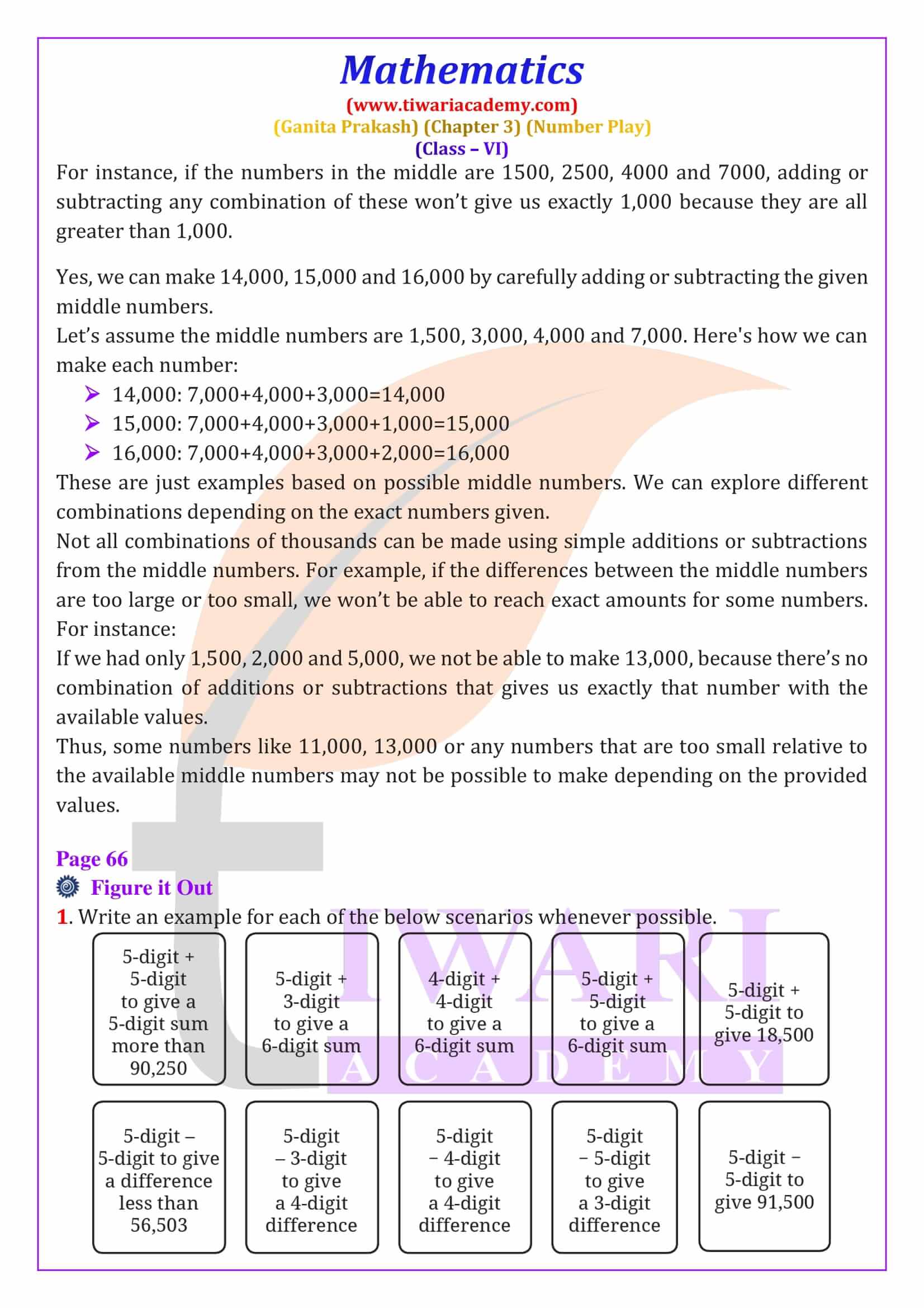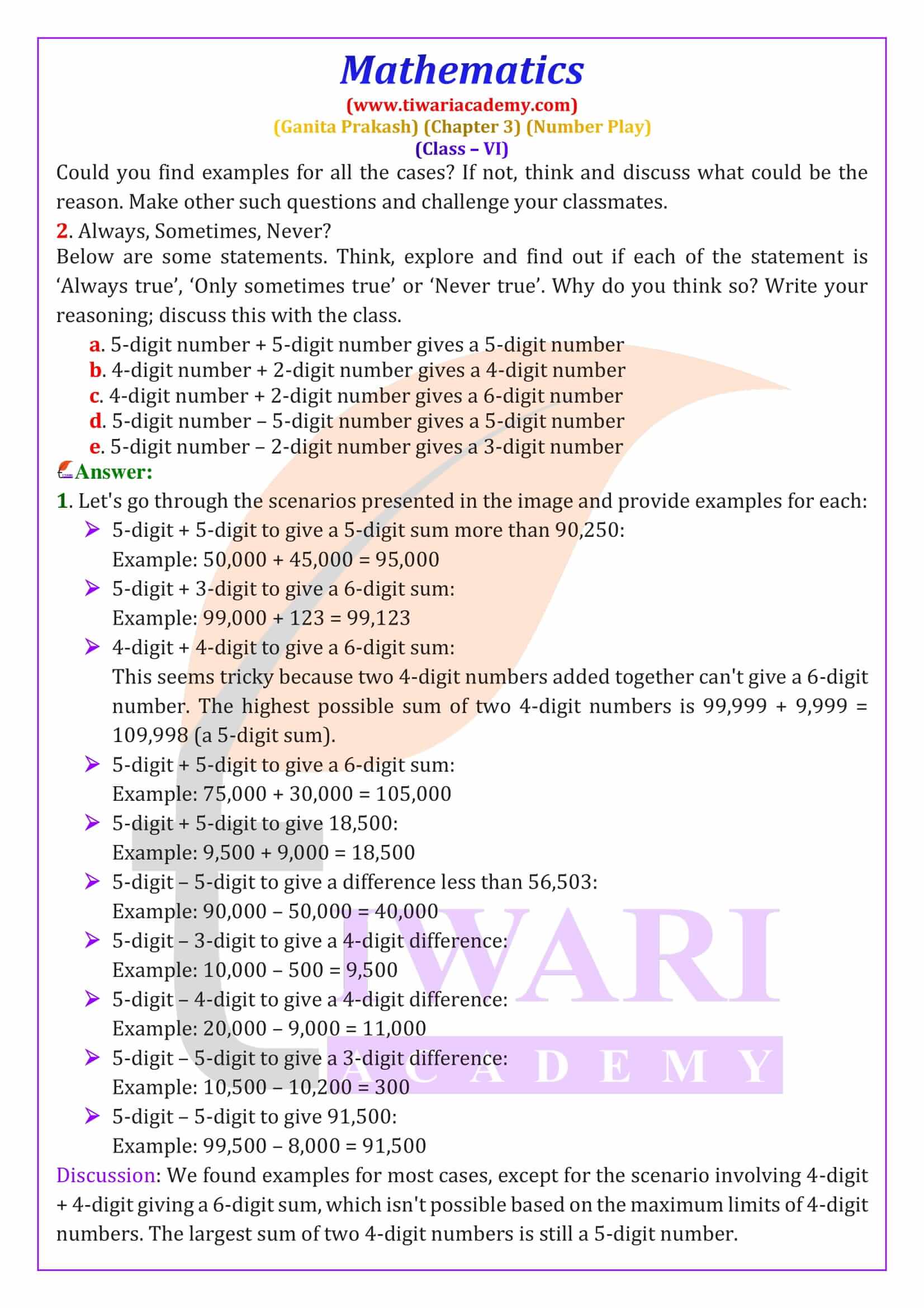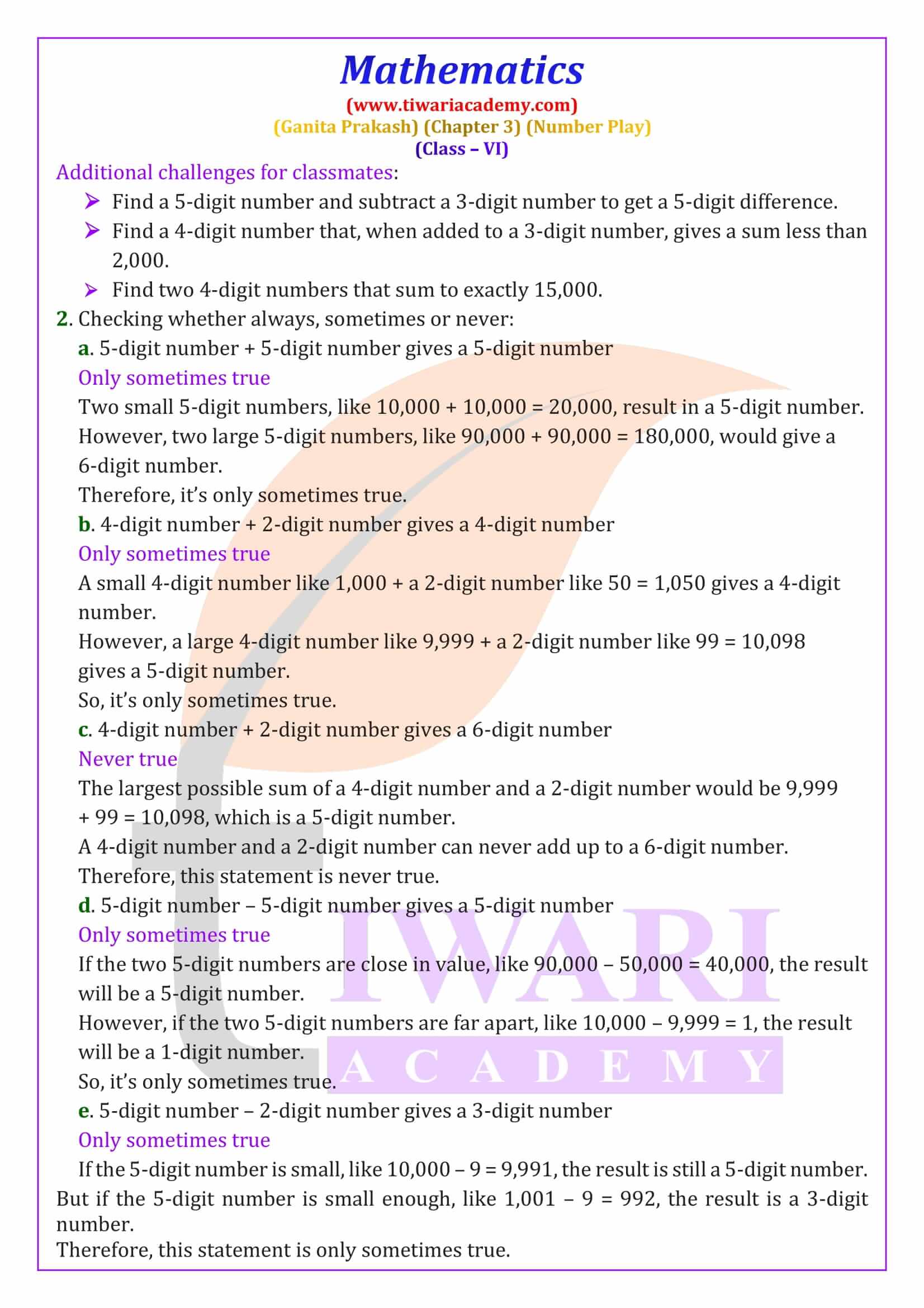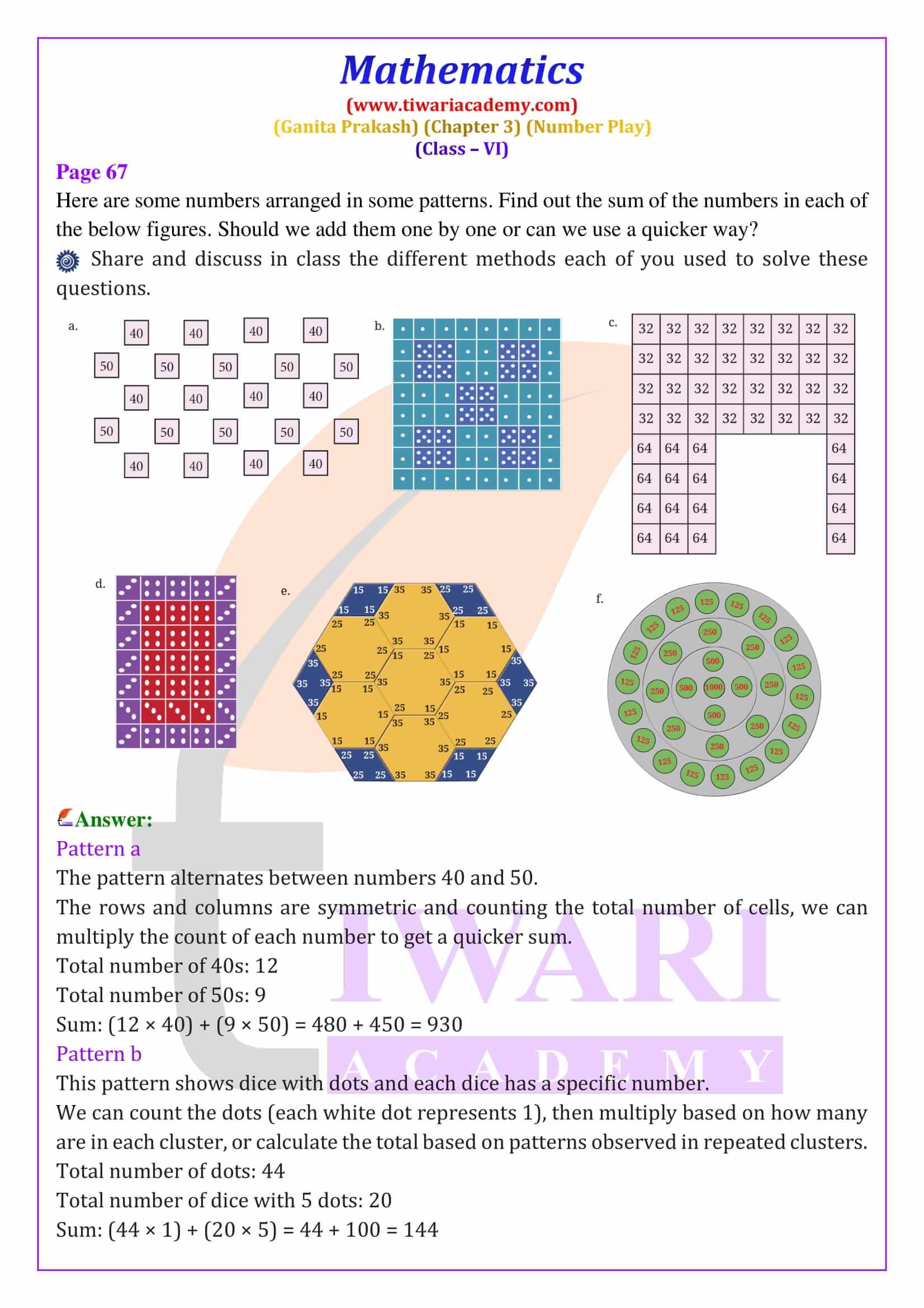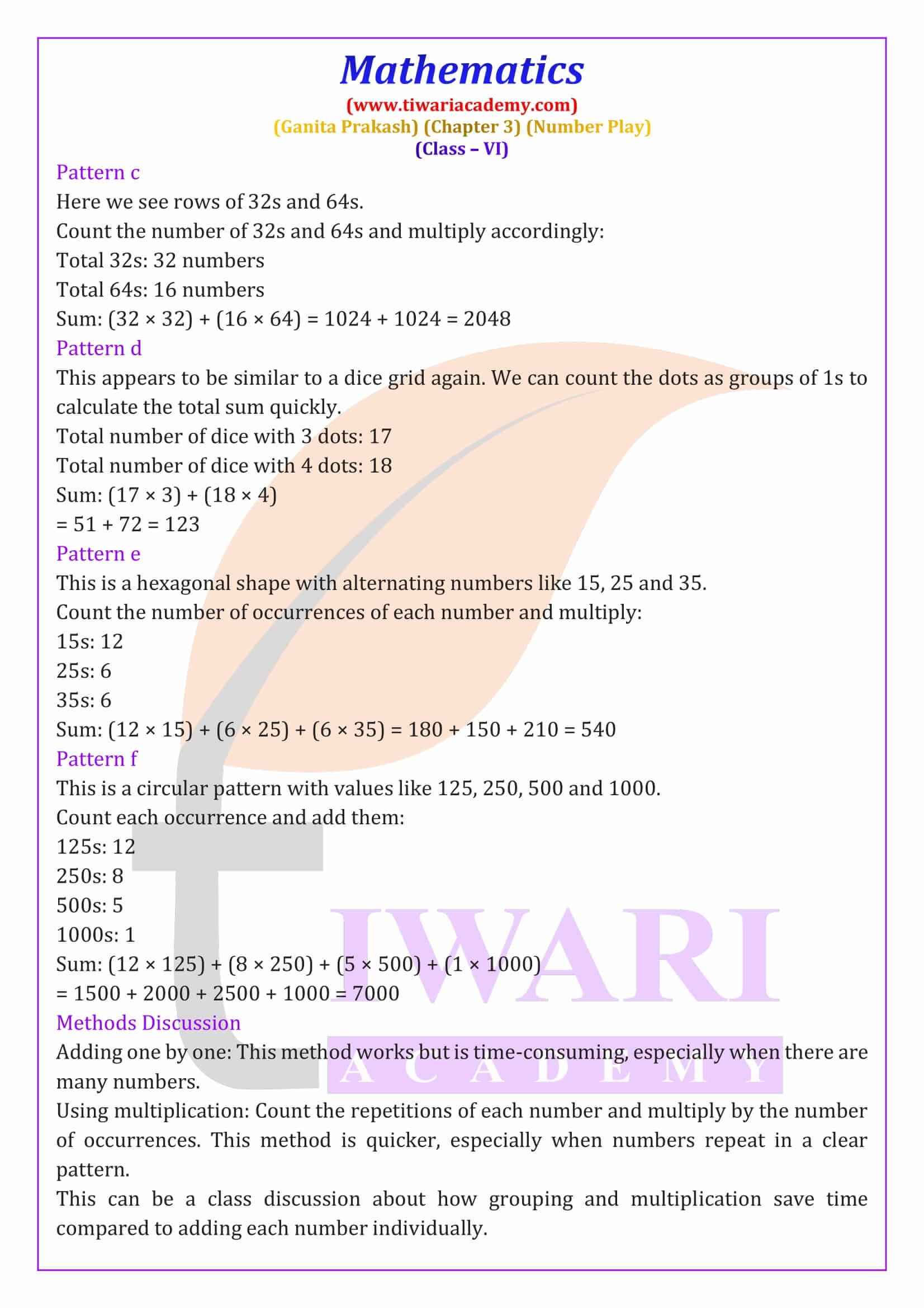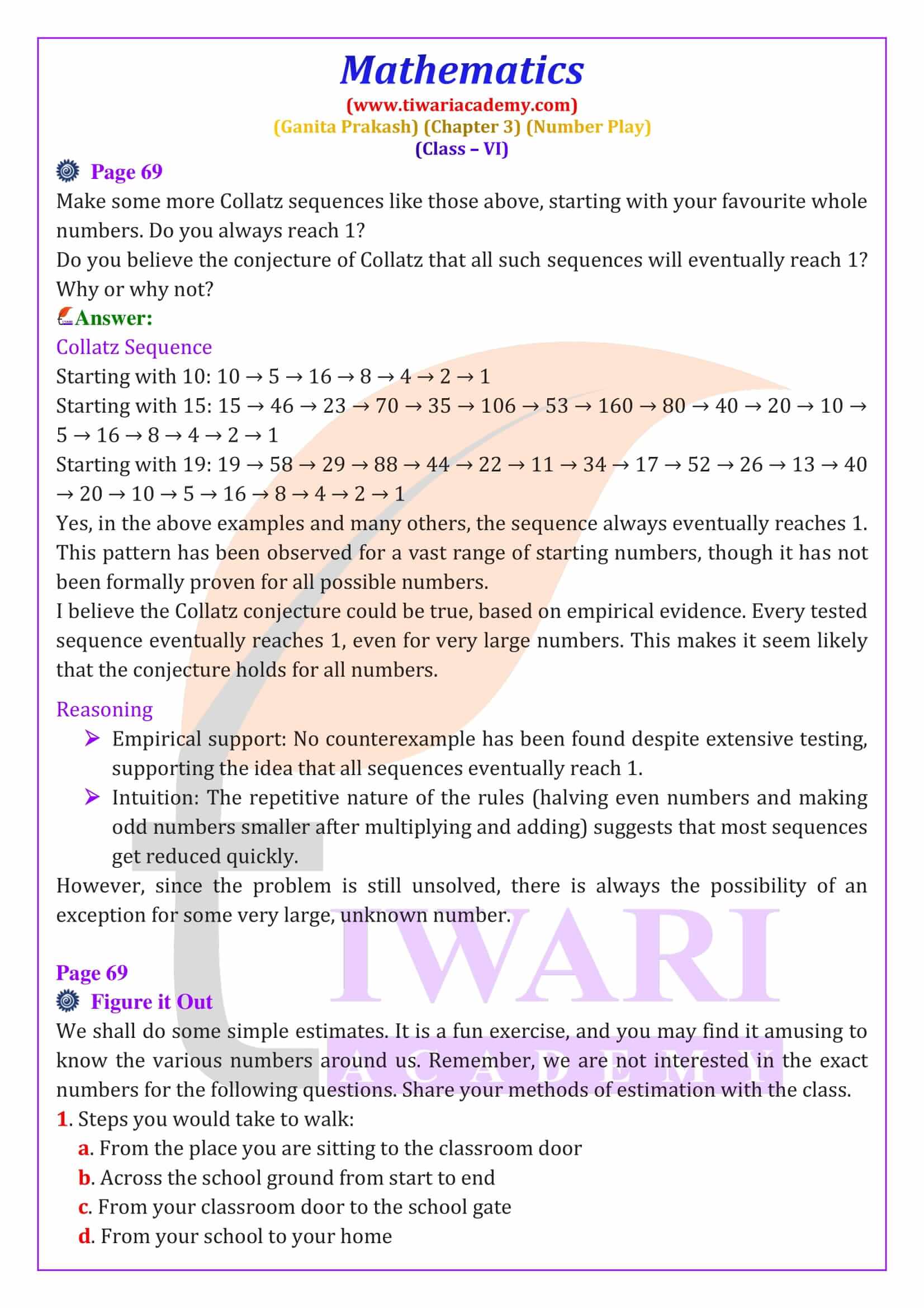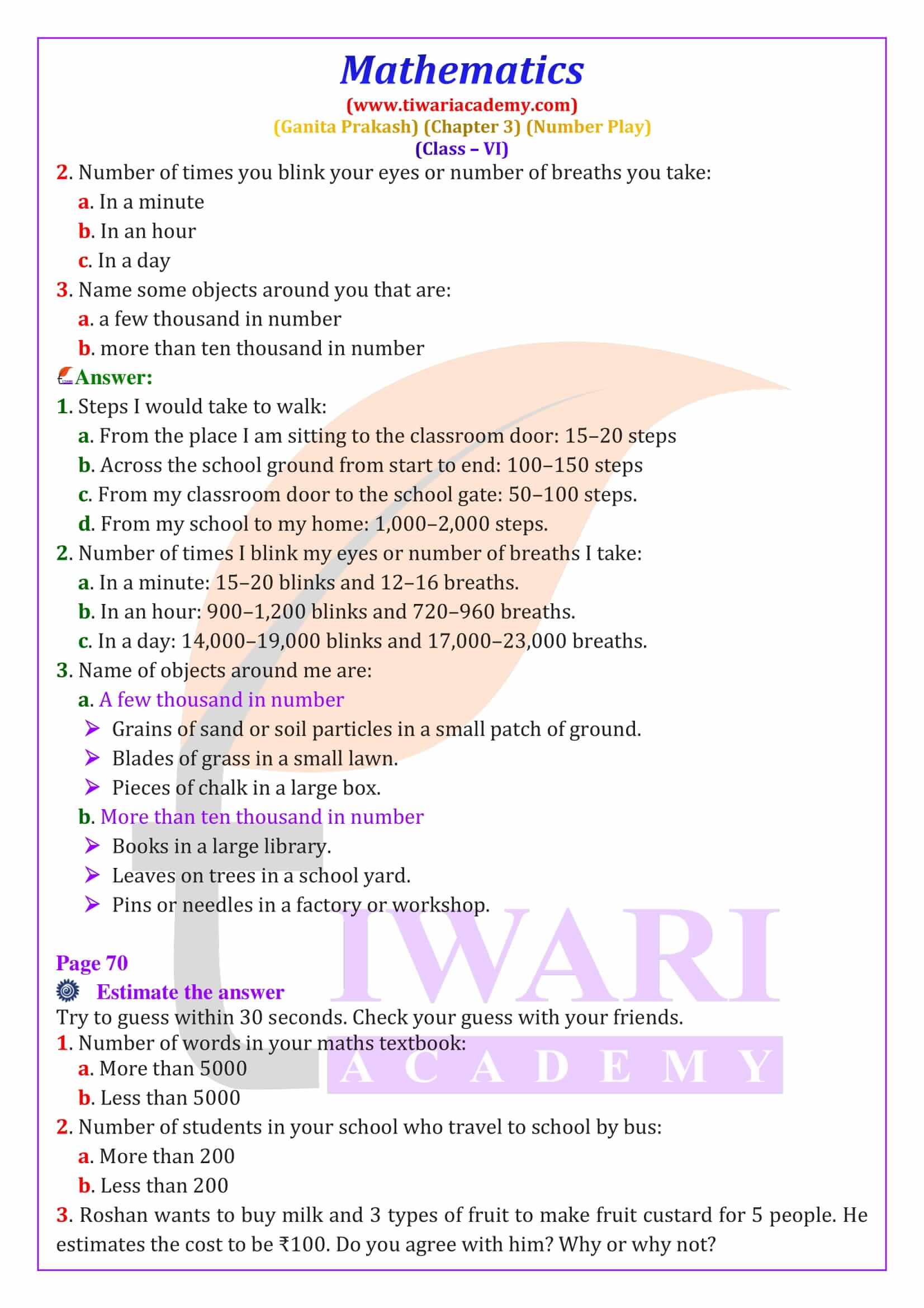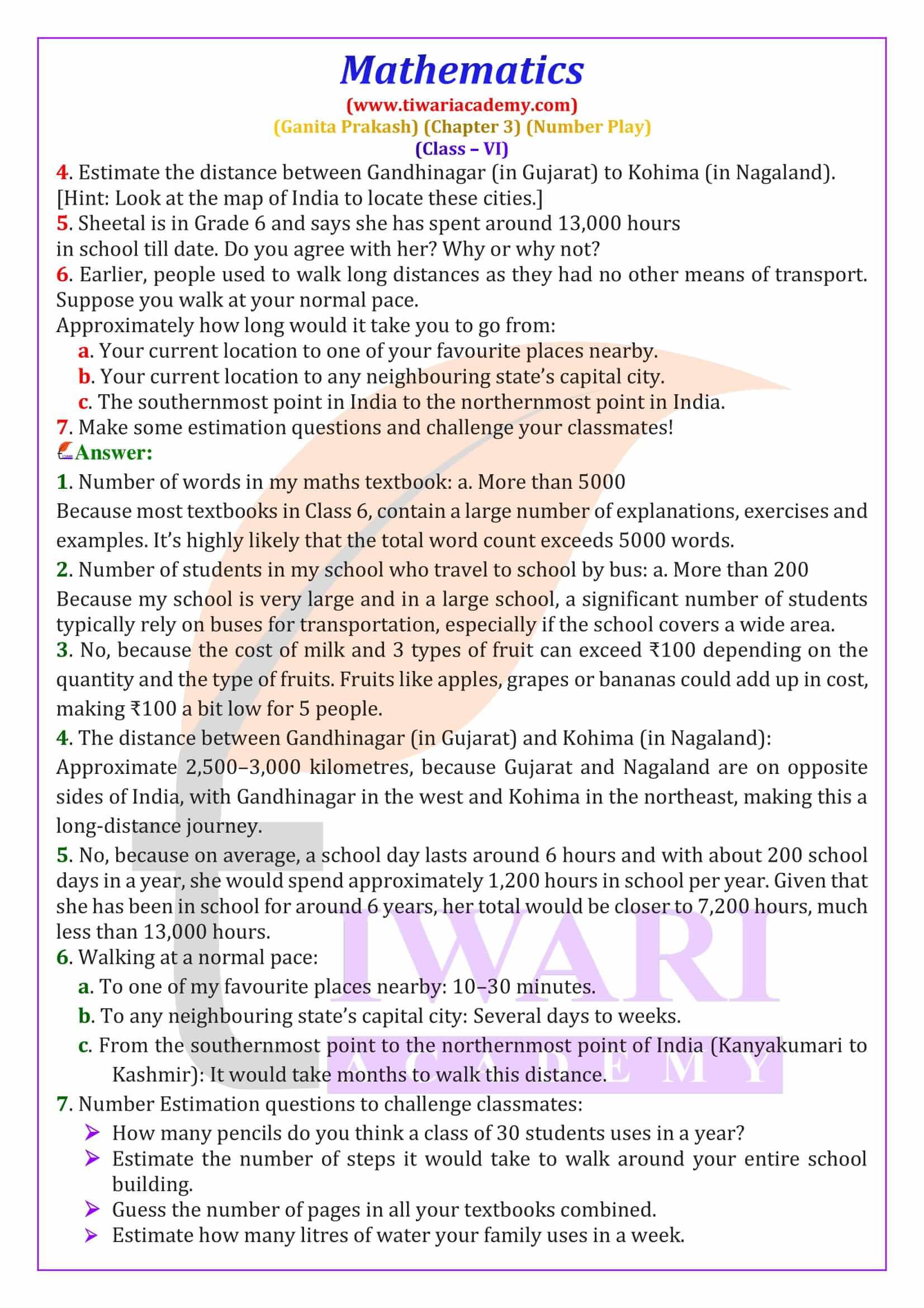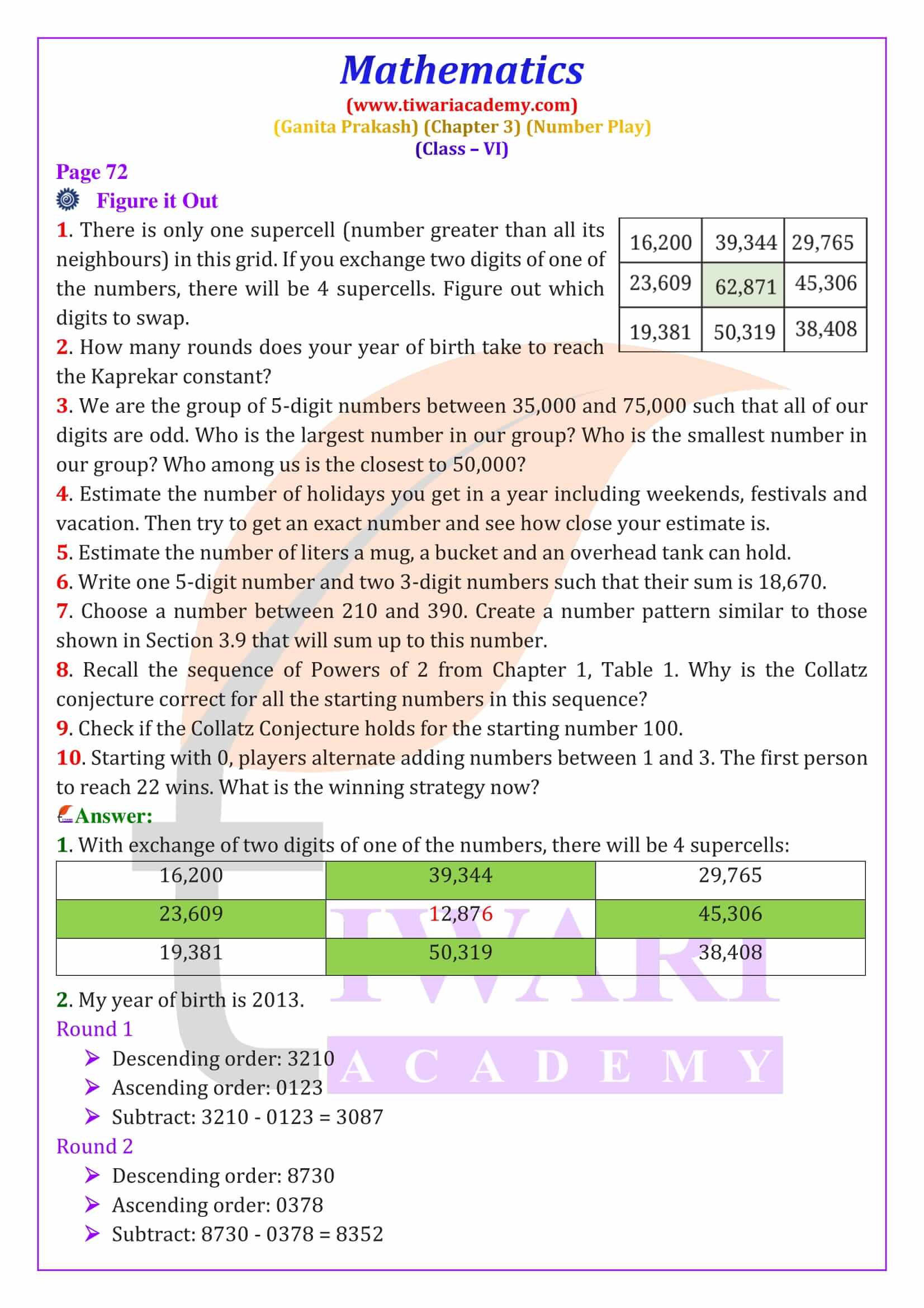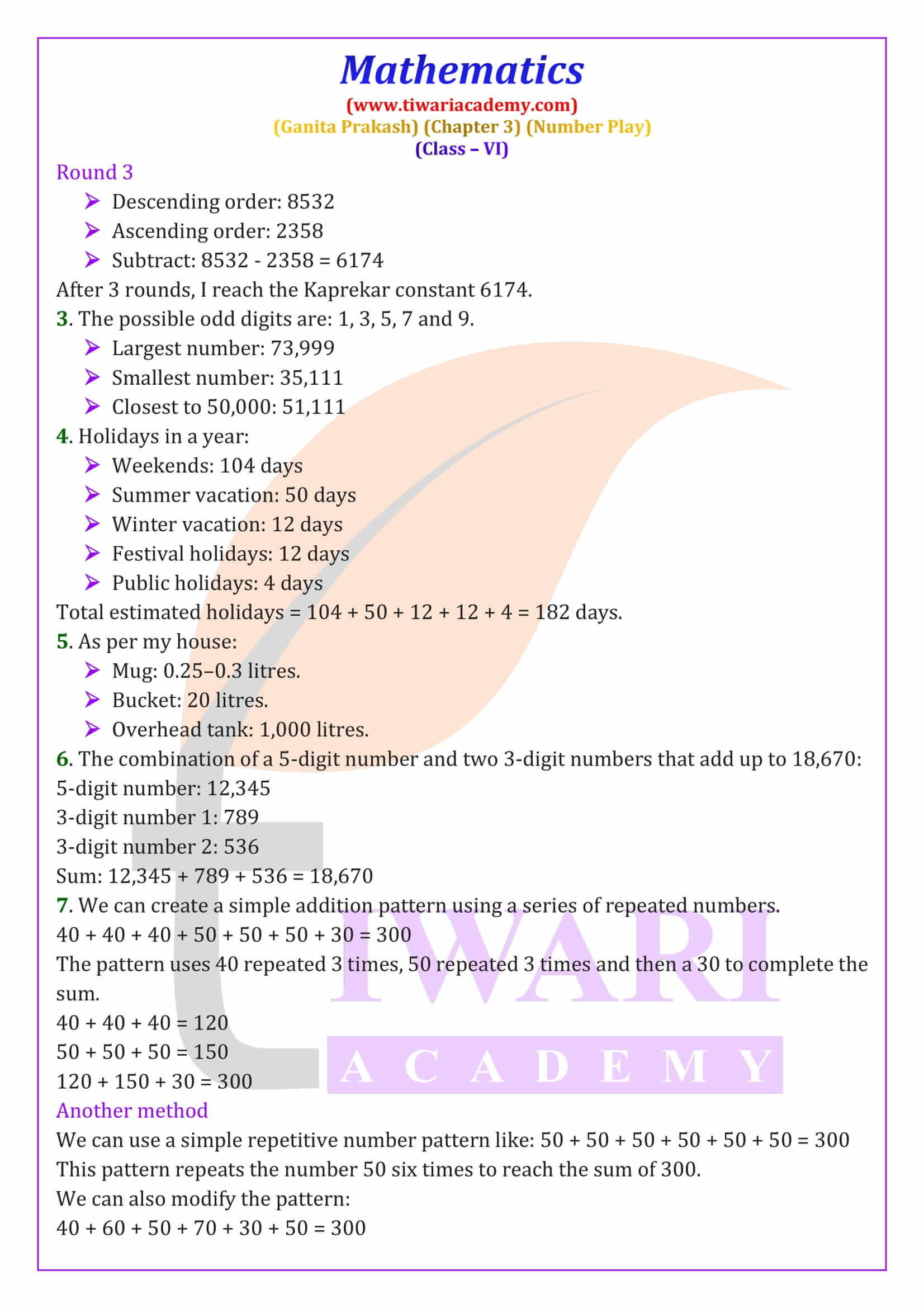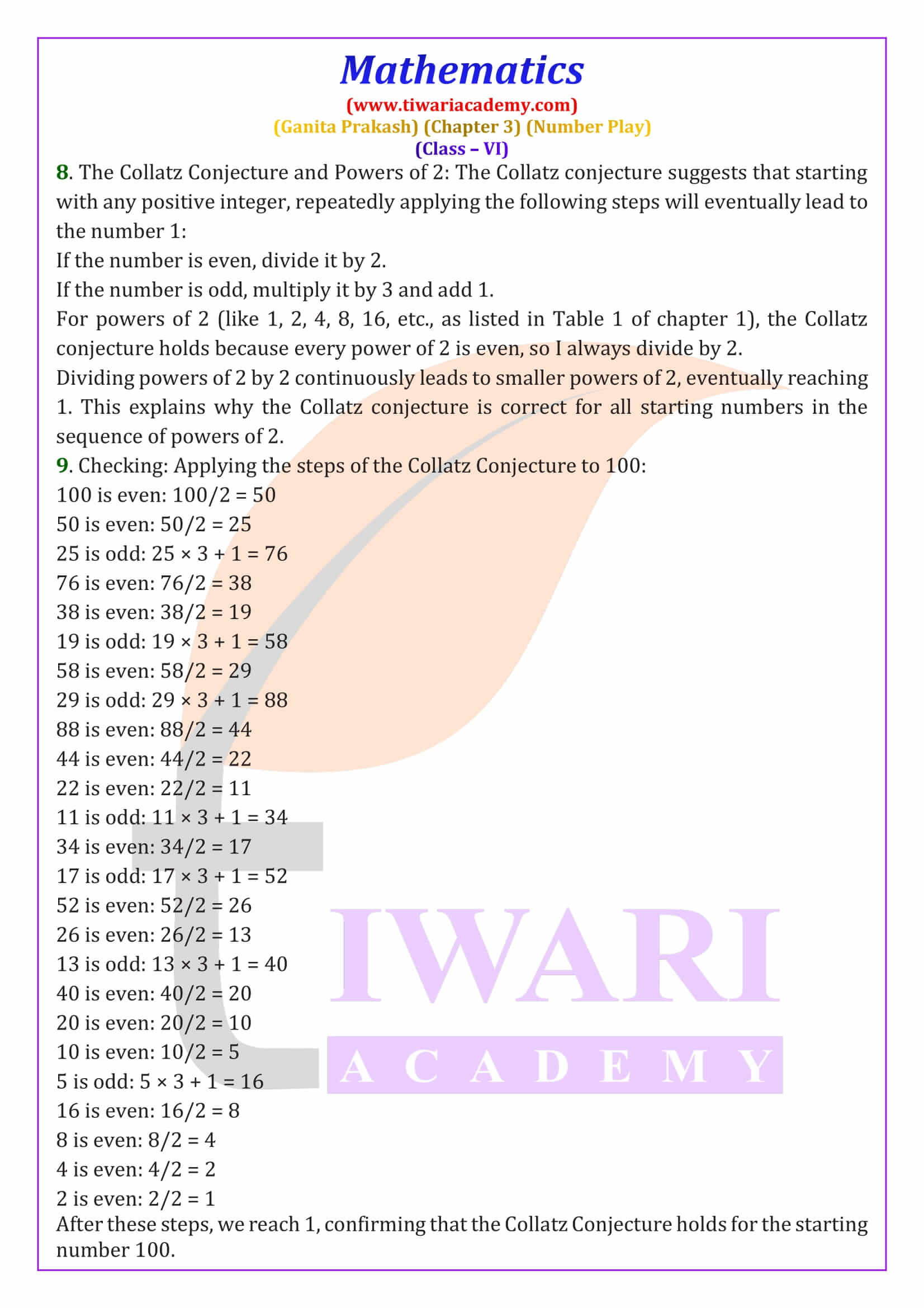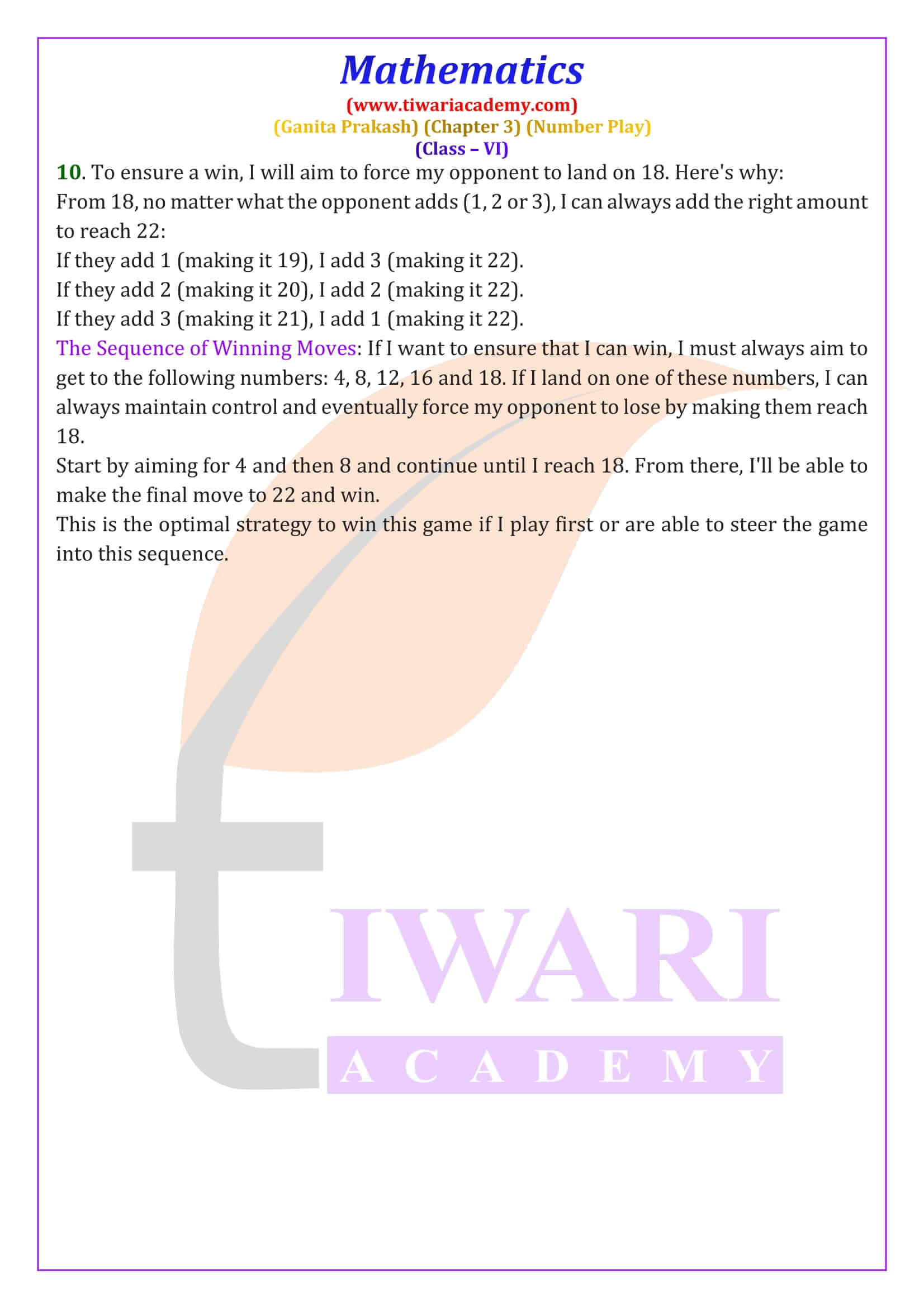NCERT Solutions for Class 6 Maths Ganita Prakash Chapter 3 Number Play updated for academic session 2025-26 in Hindi and English Medium. Explore interesting patterns and techniques with numbers to strengthen your understanding of numerical concepts.
Class 6 Maths Ganit Prakash Chapter 3 Number Play Question Answers
Introduction to Class 6 Maths Ganit Prakash Chapter 3 Number Play
The Chapter 3, Number Play, explore how numbers play a significant role in our daily lives. Numbers help us count, measure and solve problems. Class 6 Maths Ganita Prakash chapter 3 is all about using numbers in fun and creative ways to find patterns and understand relationships between them. Let’s dive into seven key topics and don’t forget to visit Tiwari Academy for the best NCERT Solutions to all the exercises in this chapter.
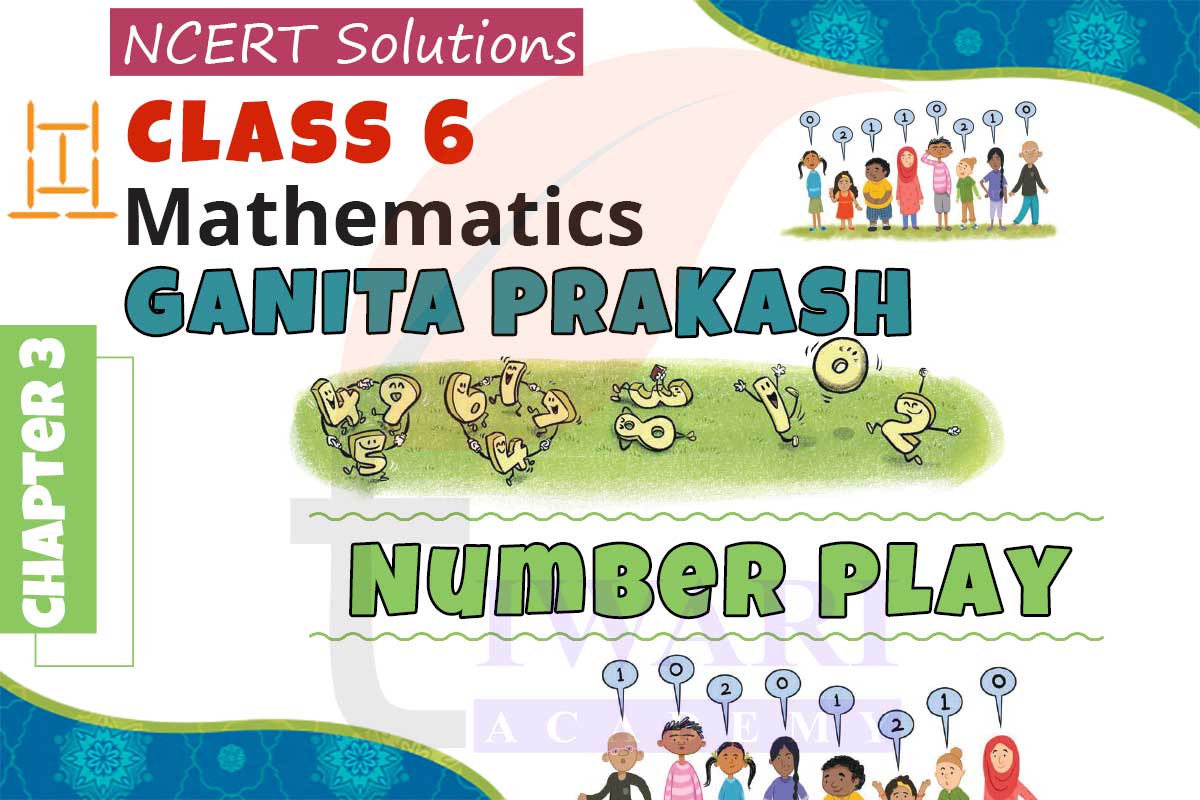
Understanding Numbers Around Us
Numbers are used everywhere—from counting to organizing things. In this section, we start by looking at numbers in different situations. Imagine children standing in a line, calling out numbers based on how many taller children stand next to them. These simple number games help us think about the meaning behind numbers. You will see how arranging children differently can change the number patterns. Try arranging them in a way that all children call out the same number. It’s a fun exercise that makes us think about numbers beyond basic addition and subtraction!
Supercells: Identifying Larger Numbers
The concept of supercells introduces a puzzle where some numbers are larger than their neighboring numbers. These “supercells” stand out because they are greater than the numbers around them. In this part of the chapter, you’ll be working with tables of numbers, trying to figure out which numbers qualify as supercells and how to maximize their count. By observing and experimenting with different arrangements, you can develop strategies to create as many supercells as possible. This is a great way to use logic and problem-solving skills with numbers!
Patterns on the Number Line
Next, we move to the number line, where we place numbers in order. You’ll be asked to find where numbers like 1500, 3050 or 9950 fit on the number line. This section helps you visualize numbers and understand their relationships. A number line is an excellent tool for understanding distance between numbers, rounding off and even solving problems related to bigger numbers like thousands and ten-thousands. With each step, you get better at estimating positions and developing number sense.
Playing with Digits
Numbers can be tricky, but they can also be fun! In this section, we learn about digit sums. For example, numbers like 68 and 176 have the same digit sum. You’ll explore other numbers that share the same digit sum and notice patterns. It’s fascinating to see how different numbers can be related in unexpected ways just by adding their digits. This exercise helps you build your understanding of how digits and numbers work together.
Palindromic Numbers
Palindromic numbers are numbers that read the same forwards and backward, like 121, 848, and 575. These special numbers are fun to explore because they form interesting patterns. You’ll also try the reverse-and-add technique, where you reverse a number and add it to itself. Keep repeating this process until you find a palindrome. This activity introduces you to patterns in numbers that might not seem obvious at first but are quite satisfying to discover.
The Magic of Kaprekar’s Number
One of the most exciting parts of this chapter is learning about D.R. Kaprekar and his magical number 6174. When you take any four-digit number, arrange its digits to form the largest and smallest possible numbers, subtract them and repeat the process—you will always end up at 6174. This fascinating pattern, known as the Kaprekar constant, never fails, and it’s a fun way to see how math can surprise us with its regularities.
Games and Winning Strategies
Numbers are not just for solving problems—they can be used for games! One of the games mentioned in this chapter involves taking turns to add numbers and the goal is to reach a specific target first. By thinking carefully about your moves, you can develop a strategy that guarantees you’ll win every time! These games help sharpen your computational thinking and show how mathematical strategies can be applied in real-life situations.
For complete and detailed solutions to the exercises in this chapter, visit Tiwari Academy for the best NCERT Solutions. They have everything you need to master Number Play and have fun while learning!
